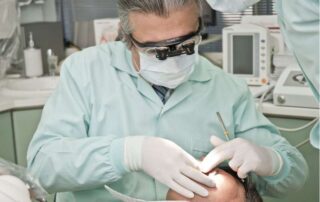The case for having dentists on your cancer care team
Author: New York University Source:www.medicalexpress.com Cancer treatment often takes a team of health professionals—oncologists, nurses, surgeons, radiologists, pathologists, and social workers—to coordinate and provide comprehensive support for patients. At NYU, dentists are increasingly being considered an important part of the cancer care team. When faced with a cancer diagnosis, many patients push other health care to the side to focus on addressing the disease. But people with cancer can experience unique issues related to their oral health. For instance, radiation to the head and neck can damage the salivary glands, hurting their ability to produce saliva, which can lead to tooth decay or cavities. Radiation and chemotherapy can also cause painful mouth sores. Patients with cancer that has spread to their bones, or who are undergoing treatment that can weaken their bones, may be prescribed high doses of antiresorptive medications such as bisphosphonates. These medications can cause a rare condition called osteonecrosis of the jaw, in which the jawbone is exposed through the gums. Other treatments—including chemotherapy and bone marrow transplants—lower the immune system, leaving patients susceptible to infection. Infections in the mouth during cancer treatment are especially dangerous, given the immune system's inability to fight back. "An abscessed tooth may mean having to stop chemotherapy to treat the infection," says Denise Trochesset, clinical professor and chair of the Department of Oral and Maxillofacial Pathology, Radiology and Medicine at NYU College of Dentistry. "Fortunately, intervening early to eliminate infection can minimize complications during the course of therapy," says Dalal Alhajji, [...]


